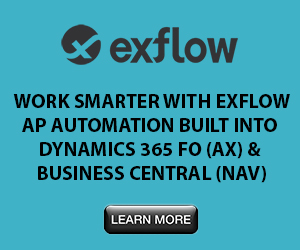Enterprises are repositioning themselves for the next wave of economic trends by prioritizing configurable, cloud-based software packages
By Aditya Kamalapurkar, Head of SAP Cloud Business and Sustainability at Capgemini Americas
In recent years, macroeconomic trends have accelerated transformation agendas across the software vendor market. Supply chain issues, increased energy costs, ESG regulations, and the race to adopt the latest and greatest digital capabilities have collectively reshaped the ways in which organizations operate. In turn, they have also altered expectations and are turning away from traditional monolithic ERP packages with multi-year contracts. Many enterprises are not only looking for customizable capability ecosystems, but they’re also searching for partners with coherent messaging and collaborative approaches to understand how the right mix of specific capabilities can meet their unique business needs.
Hyperscalers and software vendors are well aware of the changing tides, and they are correcting course to meet their consumers’ needs. To do so, software vendors have accelerated their cloud-first strategies and cloud-based offerings—all while adjusting their go-to-market agenda. This is to prepare for a future in which clients will be able to cherry pick cloud offerings to create configurable, microservices-based, and API-led cloud software packages via a flexible contract structure and pricing model.
This may not seem like a new concept. We see it all the time in business. Economic trends force clients to alter their business strategies and their expectations from suppliers shift as a result—which then causes the supplier in question to meet the new market expectations with their own adjusted business models. However, we have not seen such a significant change in the software vendor market since the software heyday nearly twenty-five years ago.
Interestingly enough, vendors are on track to meet clients’ shifting expectations, but the adoption is varied. In the next ten years, I foresee the creation of ecosystems that will jointly and successfully advance offerings such as ready-to-run cloud-based ERP and business application platforms. This is key to constructing any offering strategies in such a way that these capabilities can seamlessly be plugged into tailored packages. And in the shorter term, vendors will provide companies with advanced business process transformation and sustainability offerings that can not only be utilized in the current capability ecosystem, but that can also be folded into the next generation of truly SaaS-based ERP packages. That’s great news, but again this promising momentum has the potential to leave organizations on the back foot if they do not have implementation strategies in place to make the most of next-generation solutions.
As the North American Lead for RISE with SAP at Capgemini, I’ve engaged in hundreds of client discussions with CxOs since its launch. Many leaders ask me about the long-term vision behind these cloud-first strategies as they not only struggle to select vendors or offerings, but they also are concerned about their organizations’ implementation plans for the new era of ERP offerings. Regardless of the client, I encourage every organization to spend time getting the fundamentals right.
Companies should always ask two questions: “what is the objective and what happens once I go the RISE with SAP route?” Once organizations are able to understand how they measure key priorities, metrics, and requirements, they can then determine what offer and service packages will best suit them in the long term. This evaluation period also requires enterprises to watch the vendor market and study how their capability transformations are unfolding in order to then determine their own clean-core maintenance and microservices-based API-led architecture plans. Based on these findings and decisions, clients will have the ability to map out entitlements from vendors’ bundles and run pricing models for an apples-to-apples comparison.
After this process is completed, they’ll need to get their ducks in row, so they’re prepared to implement their ERP. If not planned well, this will be a challenging process. Leaders should recognize that this planning stage is not just about swapping out technologies; you’re ultimately changing your business process and model, and therefore nailing down business value proposition is key.
To tackle this daunting stage and ensure that organizations are prepared to make the most of vendors’ next-generation products and service models, consider the following tactics:
- Improve business processes and agile tactics
- Establish cyber, data, sustainability, and engineering strategies aligned to business goals and desired cloud-based applications
- Focus on upskilling and reskilling talent
- Identify technology bottlenecks, strategically off-boarding certain legacy solutions and on-boarding new capabilities that will pair well with your ERP package
- Develop future assessment protocols to ensure your ERP package is effectively integrated after the implementation period
We are entering a new age in the software industry that will not only impact vendors’ business models, but also that of their clients. Cloud-first strategies will reign supreme and configurable ERP software packages will soon be available. However, with so much progress being made on the vendor side of the market, clients must also work to ensure their organizations are prepared to implement the offerings and adjusted partnership agreements that they’ve desired. Only then will they see true business harmony.
BIO: Aditya Kamalapurkar heads the SAP on Cloud Business for Capgemini Americas and globally leads the SAP Sustainability and Cybersecurity GTM. He co-leads the Women in SAP charter for North America. Adi has a background in Electrical and Electronics Engineering with a master’s degree in technology management from the TU Delft, Netherlands. He is based out of San Francisco.

















